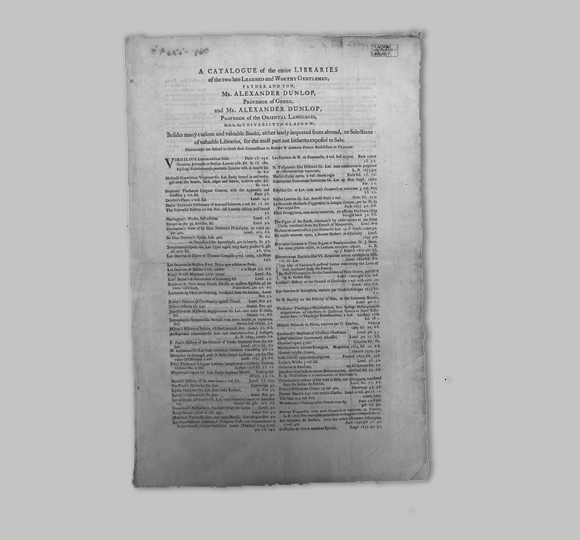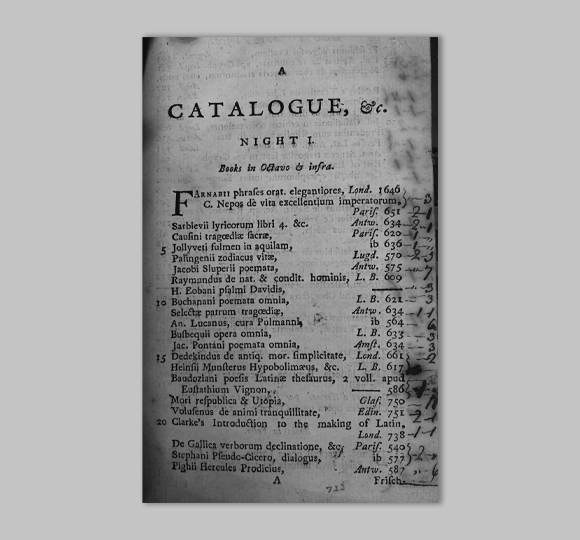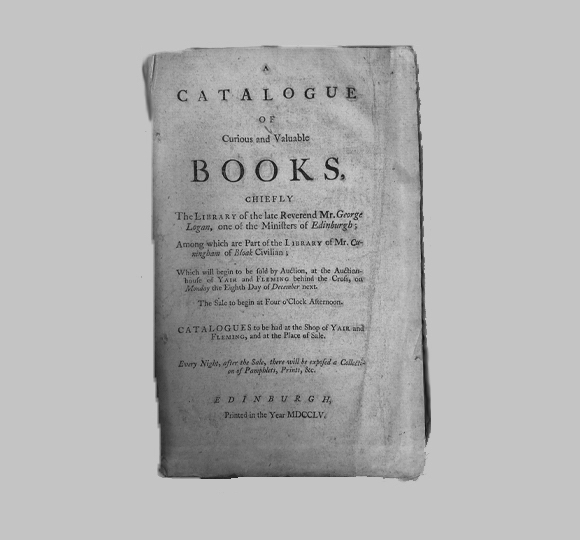



Auction catalogues offer a range of revelations on the titles and types of books that were circulating Scotland in the years leading up to the Enlightenment and the decades that followed. Each lot for sale commonly lists the author or publisher name, place and date of printing, format and genre, and copy specific detail such as binding or condition. Some catalogues, annotated by contemporaries, even have buyers’ names and prices paid at sale. The aim of this project is to systematically capture this information and use it as a means to investigate the circulation and consumption of books at the beginning of the Scottish Enlightenment.
Much of our understanding of the seventeenth- and eighteenth-century Scottish book trade has focused on supply and production - what presses were active where and what they produced. However, readers did not only purchase new editions. Existing alongside the retail trade was a buoyant market in second-hand books. Institutional libraries and individuals alike augmented their collections with such purchases. Old books continued to circulate alongside new ideas. This trade has often been submerged from view leaving only limited traces – provenances in books, bookseller receipts, notes in correspondences, and critically, auction catalogues. If we are to understand the spread of ideas and books in Scotland at this time, it is critical to understand what sort of books were embedded in the cultural field at large. Were Scotland’s people in fact collecting the works that excited the philosophes, or do auction catalogues reveal other tastes and preoccupations?